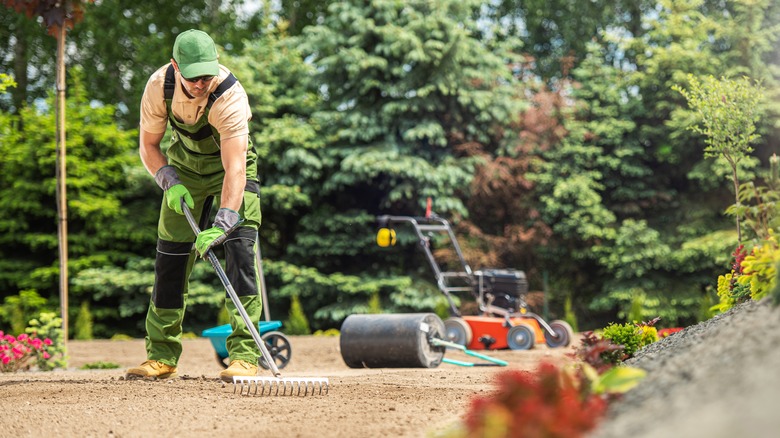In the world of lawn care and landscaping, a few invasive plants stand out as particularly challenging to manage, and knapweed is one of them. One effective way to handle it is through hand-pulling, along with fostering the growth of perennial plants and grasses. If that’s not cutting it, you can also employ specific herbicides for a stronger approach. Native to Eastern Europe and Western Asia, knapweed has found its way into North American gardens, yards, and fields. Its appearance is deceptive; it may look like a typical flowering plant with its purple, thistle-like blooms. However, don’t let its looks fool you. This plant is a serious threat to your lawn and other vegetation. Some knapweed varieties, like Russian knapweed, secrete a toxic chemical that contains sesquiterpene lactones, which actively disrupts the growth of nearby plants to monopolize resources. The chemical can also irritate human skin, adding another layer of complexity to its removal.
Spotting knapweed before it flowers is not just important; it’s a race against time. Once this plant blooms, it turns into a seed-dispersing machine, setting you up for a more extensive infestation. You’re not just trying to curb current growth; you’re aiming to prevent a future headache. And let’s talk about those seeds. Even minor disturbances like digging can scatter them; these seeds are the ultimate survivors. They can lie dormant in your soil for up to eight years. So you’re not just fighting a one-season weed but dealing with a long-term adversary.
Encouraging perennial grasses and hand-pulling techniques

Firstly, one of the best long-term strategies to manage knapweed is encouraging the growth of perennial grasses or other cover crops. By doing this, you’re setting up a biological defense line in your yard. These plants will compete with knapweed for essential resources like nutrients and sunlight, eventually outperforming it. The better these plants thrive, the less room knapweed has to establish itself. It’s not merely about adding greenery but creating an inherently hostile ecosystem to knapweed.
Now, onto hand-pulling, your go-to immediate action for isolated knapweed infestations. This isn’t a casual pull-and-go situation; it requires some precaution and planning. Firstly, always remember to put on gloves. Now, let’s talk tools. If the soil is dense, a mere tug won’t suffice; you’ll need a shovel or a trowel to dig the plant out effectively. But don’t stop there. Removing as much of the original soil surrounding the weed as possible is crucial, as this soil is most likely full of knapweed’s survival essentials. Just yanking the plant out leaves a space where new knapweed could grow, thanks to soil disruption. This is why keeping an eye on previously infested spots is vital. You’re not just pulling out a weed; you’re also committing to a bit of an aftercare regimen, one that involves regular monitoring for any new growth.
Using herbicides for effective knapweed control
When hand-pulling and other natural remedies just won’t cut it, you may need to bring in the heavy artillery: herbicides. These are specialized chemicals designed with one purpose—to neutralize unwanted plants like knapweed. In the weed killer and herbicide realm, not all products are created equal. For knapweed, you’re looking for a specific combination of 2,4-D and dicamba. A product that checks these boxes is Ortho WeedClear Weed Killer Concentrate. So, it’s not just about spraying any chemical; it’s about selecting the one tailored for your knapweed problem.
Timing is another crucial factor that often gets overlooked. You have two prime opportunities to strike: in the spring before knapweed blooms or during the fall season. Why these periods? This is when the knapweed plant is most susceptible to absorbing the herbicides, ensuring the chemicals do their job efficiently. You’re not just spraying to spray; you’re timing it to maximize impact.
But let’s not forget that herbicides are chemicals and come with responsibilities. Always read the label for exact guidelines on how to apply it. Misusing herbicides can cause more harm than good, potentially damaging your lawn and presenting environmental risks. You don’t want a solution to become another problem. Additionally, be extremely cautious when applying herbicides near open water sources or edible plants. Many herbicides are not friends of aquatic ecosystems or your vegetable garden, so take the right precautions to keep everything else safe while dealing with your knapweed problem.